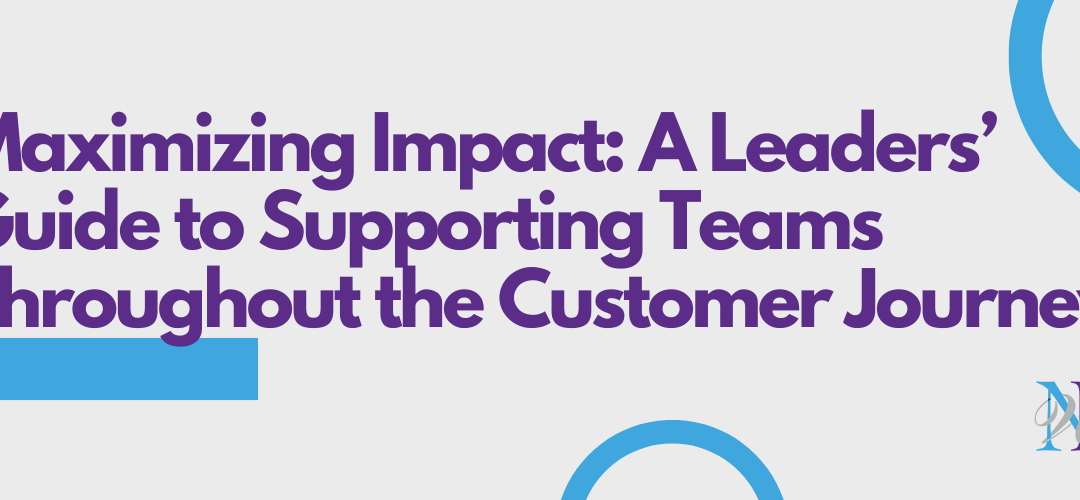As Business leaders, whether Marketing, Sales, or Operations leaders, we have a crucial role in ensuring our marketing and GTM teams are not only equipped to create new customer relationships but also to develop and maintain them throughout the entire customer journey. Too often, marketing leaders focus heavily on the initial attraction of new customers, resulting in a volume of prospects on the front end. However, without equal emphasis on cultivating and retaining, these leads often fail to convert into loyal customers.
By strategically investing in each phase of the customer lifecycle, Marketing leaders can guide their teams to achieve sustained success and drive long-term business growth.
The ‘Attract-Cultivate-Retain ProcessTM’ by NWI shows you how.
ATTRACT: Building New Customer Relationships
The first step in the customer journey is to create new relationships. This phase is all about attracting prospects through targeted channels. It involves casting a wide net to reach a broad audience within your ideal customer profile. Eager companies may jump into a sales pitch instead of generating interest and drawing potential customers into a deeper conversation. The goal is to create awareness and spark initial engagement with your brand. Here are examples of methods to attract potential customers:
- Email Campaigns: Effective email marketing campaigns can capture attention and provide personalized information that resonates with potential customers to solve their pain points.
- Events: Hosting or participating in industry events offers a platform to engage with prospects directly, showcasing your expertise and building initial connections.
- Social Media: Leveraging social media platforms helps in reaching a broad audience, sharing valuable content, and initiating conversations.
- Conversations and Referrals: Personal interactions and word-of-mouth referrals remain powerful tools for building trust and credibility.
- Inbound Marketing and Demos: Providing informative content and product demonstrations can attract prospects who are actively seeking solutions.
Creating new customer relationships is about initially attracting prospects that are within your ideal customer profile. However, the journey doesn’t stop here.
CULTIVATE: Reinforcing and Nurturing Relationships
Once prospects are in the pipeline, the focus shifts to developing these relationships. This phase involves consistent and strategic efforts to reinforce messaging and nurture leads. The percentage of buyers ‘ready to buy’ is low – only 3-5% depending on which source and/or market. Therefore, the goal is to build on the initial interest and engage prospects with meaningful content and interactions that move them closer to making a decision or keeping your company top of mind for when they are ready to make a purchase.
- Follow-Up: Timely and thoughtful follow-up emails and calls can keep the conversation going and address any questions or concerns.
- Re-Marketing: Targeted re-marketing campaigns can remind prospects of your offerings and highlight new aspects, capabilities or company updates.
- Repurposing Content: Sharing blogs, case studies, and other content in different formats ensures your message reaches prospects in multiple ways.
- Inviting Conversations: Encouraging open dialogue through webinars, Q&A sessions, or meetings can deepen engagement.
Developing relationships is about staying engaged and providing value. According to Gartner’s research, when B2B buyers are considering a purchase, they spend between only 5-17% of their time meeting with potential suppliers (higher end of the percentage range if there are multiple suppliers). This statistic highlights the growing independence of buyers who increasingly rely on digital channels and self-directed research rather than direct interactions with sales representatives.
Fostering relationships with prospects and future clients through marketing channels is complementary to meetings and engagements, it gives your prospects more information and context.
RETAIN: Ensuring Longevity and Relevance
The final phase is retaining these relationships until prospects are ready to make a purchase. This phase requires a focus on consistency and relevance. This is accomplished by being present and continuing to deliver value, ensuring that your brand remains a trusted resource even after the initial engagement. At this stage, it is crucial to review the measurements and data to determine which methods are most effective.
- Staying Relevant: Continuously share updates, insights, and educational content that align with the prospect’s interests and needs.
- Consistency: Regularly scheduled communications, such as newsletters and personalized messages, help keep your brand top of mind.
- Measuring Analytics: Utilize analytics to track engagement and identify which strategies are most effective in maintaining interest.
- Non-Selling Approach: Focus on informing and educating rather than pushing for a sale. This builds trust and positions your brand as a valuable resource.
Strategic Investment from the Top
As leaders, it’s our responsibility to ensure that your marketing teams are equipped and empowered to invest in all three phases of the customer journey. This requires strategic thinking and prioritization:
- Resource Allocation: Ensure that resources are evenly distributed across the attract, cultivate and retain phases.
- Training and Development: Provide your team with the necessary training and tools to effectively engage with prospects at each stage.
- Cross-Department Collaboration: Foster collaboration between marketing and sales teams to create a seamless experience for prospects.
- Feedback Loop: Looping back to continuously learn and improve strategies based on what is working and what isn’t.
By having consistent emphasis throughout the buyers’ journey, commercial leaders can help their teams achieve higher prospect to customer conversion rates and foster longer term customer loyalty.
Managing a Full Circle Plan
Supporting marketing teams throughout the lifecycle and customer journey is a multifaceted endeavor that requires strategic investment and consistent effort. By focusing on creating new relationships, developing those connections, and maintaining them with care and relevance, Marketing leaders can ensure their teams drive sustained success. Remember, the journey doesn’t end with a single email or outreach; it’s an ongoing process of engagement and value delivery. By adopting this holistic approach, commercial leaders can guide their teams to build meaningful, lasting relationships that ultimately lead to business growth.
Let’s discuss your opportunities. Connect with us here to review your new business goals and how we can help: Book a call
Author:
Heidi Hattendorf is a key partner to NWI and part of the NWI team. She is a Marketing Strategist who helps companies with their GTM, marketing and positioning strategies. Heidi brings a strong background in Marketing and GTM leadership including executive and CMO roles in B2B.



Recent Comments